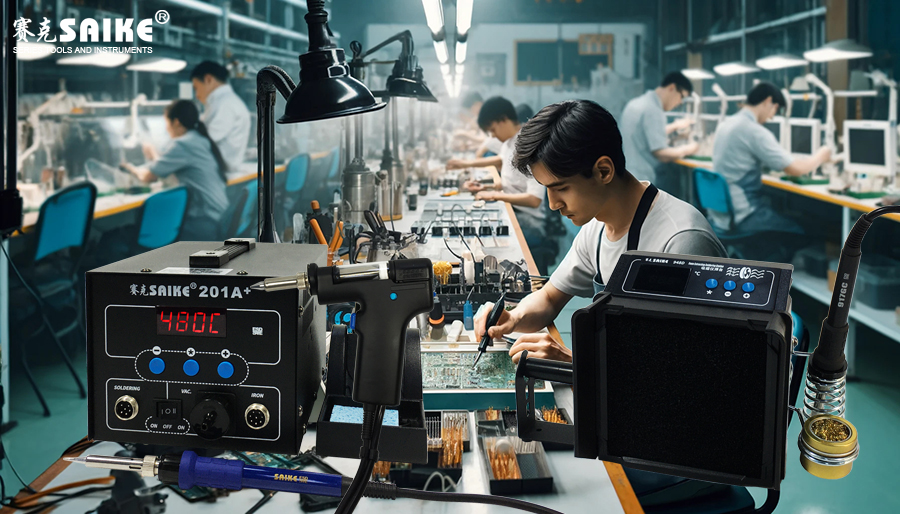
SK-YJ000HT-KP 100007
The soldering station plays a crucial role in electronic manufacturing and maintenance work, and the appropriate soldering tools and accessories greatly enhance its functionality and efficiency. These tools and accessories not only facilitate soldering work but also improve soldering quality and operator safety. This article will introduce various soldering tools and accessories used in soldering stations in detail, helping users better understand and utilize these devices.
I. Basic Components of the Soldering Station
The soldering station typically consists of the following basic components:
– Soldering iron: The core component of the soldering station, used to heat and melt solder to connect electronic components.
– Temperature controller: Used to adjust the temperature of the soldering iron, ensuring the heat is suitable for specific solders and components.
– Soldering iron holder: Provides a safe place to store the soldering iron, preventing the hot iron from coming into contact with the workbench or other flammable materials.
II. Soldering Tools
1.Solder wire:
– The primary material used for soldering, often made from an alloy of tin and lead, although lead-free solder wire is increasingly used to meet environmental requirements.
2.Flux:
– A chemical substance that aids the flow of solder and prevents metal oxidation. Flux can be in liquid, paste, or built into the solder wire.
3.Solder sucker and desoldering wick:
– Solder sucker: Removes excess or misplaced solder from solder joints.
– Desoldering wick: Also removes unwanted solder, especially useful for cleaning up solder joints in tight spaces.
4.Third hand tool:
– A tool with a clamping device and magnifying glass, used to stabilize and enlarge work objects, freeing up the operator’s hands for precise work.
III. Soldering Accessories
1.Hot air gun:
– Used for soldering or desoldering SMDs (Surface-Mount Devices) by heating the solder joints with hot air.
2.Preheating station:
– Utilized when soldering large or multilayer circuit boards, it preheats the entire board to prevent local overheating, which can cause board warping or interlayer separation.
3.Thermometer/Thermal imager:
– Monitors temperatures during the soldering process, ensuring they do not exceed the thermal tolerance of components and preventing damage.
4.Cleaning supplies:
– Cleaning sponge or copper wire ball: Cleans the soldering iron tip, removing old solder and oxides.
– Cleaning agent: Cleans residual flux from the circuit board, preventing corrosion and improving appearance.
5.Soldering protection pad:
– A high-temperature resistant work pad that protects the workbench from direct contact with the hot soldering iron and solder, preventing damage.
IV. Conclusion
Appropriate soldering tools and accessories significantly enhance the quality and efficiency of soldering operations while increasing operator safety. Understanding and properly using these tools and accessories is an essential skill for every electronics industry professional. As soldering technology advances, the market continuously introduces more advanced tools and equipment, and timely equipment updates and learning new techniques will help improve work quality and efficiency.


